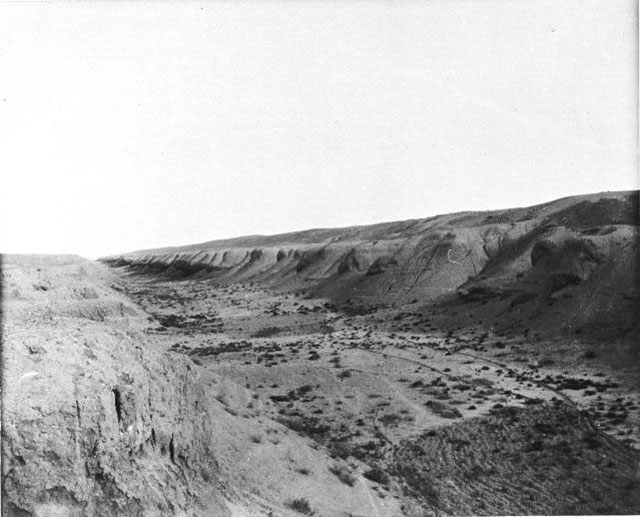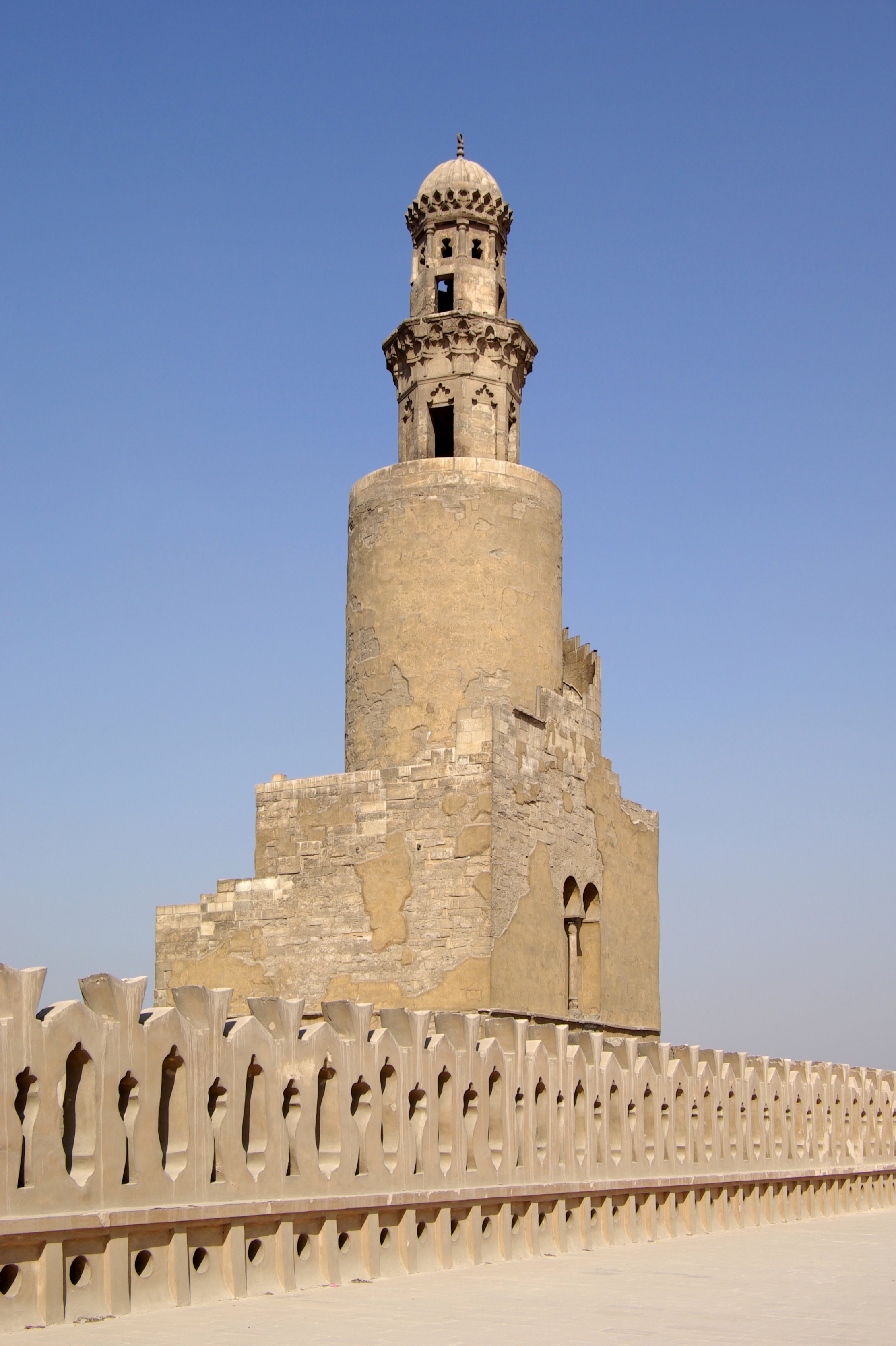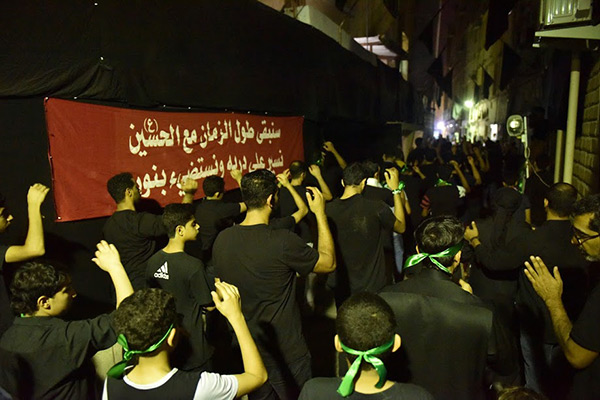|
Najda Ibn Amir Al-Hanafi
Najda ibn Amir al-Hanafi (; ) was the head of a breakaway Kharijite state in central and eastern Arabia between 685 and his death at the hands of his own partisans. His emergence formed part of the Second Muslim Civil War and the faction he led stood in opposition to the Umayyad Caliphate, which controlled Syria and Egypt, and the caliphate of Abd Allah ibn al-Zubayr, which controlled the Hejaz and Iraq. Early life and career Najda was born in circa 655 and belonged to the Banu Hanifa subtribe of the Banu Bakr, resident in the Yamama (central Arabia).. As a young man, he already wielded considerable influence among the Kharijites of the Banu Hanifa in his home region. In 680, he launched a rebellion in the Yamama against the Umayyad Caliphate, roughly coinciding with the Umayyads' suppression of Husayn ibn Ali's revolt during the Battle of Karbala.. During the 683 Umayyad siege of Mecca, where the anti-Umayyad opposition leader Abd Allah ibn al-Zubayr was holed up, Najda and his h ... [...More Info...] [...Related Items...] OR: [Wikipedia] [Google] [Baidu] |
Khawarij
The Kharijites (, singular ) were an Islamic sect which emerged during the First Fitna (656–661). The first Kharijites were supporters of Ali who rebelled against his acceptance of arbitration talks to settle the conflict with his challenger, Mu'awiya, at the Battle of Siffin in 657. They asserted that "judgment belongs to God alone", which became their motto, and that rebels such as Mu'awiya had to be fought and overcome according to Qur'anic injunctions. Ali defeated the Kharijites at the Battle of Nahrawan in 658, but their insurrection continued. Assassination of Ali, Ali was assassinated in 661 by a Kharijite dissident seeking revenge for the defeat at Nahrawan. After Mu'awiya established the Umayyad Caliphate in 661, his governors kept the Kharijites in check. The power vacuum caused by the Second Fitna (680–692) allowed for the resumption of the Kharijites' anti-government rebellion, and the Kharijite factions of the Azariqa and Najdat came to control large areas in ... [...More Info...] [...Related Items...] OR: [Wikipedia] [Google] [Baidu] |
Mu'awiya I
Mu'awiya I (–April 680) was the founder and first caliph of the Umayyad Caliphate, ruling from 661 until his death. He became caliph less than thirty years after the death of the Islamic prophet Muhammad and immediately after the four Rashidun Caliphate, Rashidun ('rightly-guided') caliphs. Unlike his predecessors, who had been close, early companions of Muhammad, Mu'awiya was a relatively late follower of Muhammad. Mu'awiya and his father Abu Sufyan had opposed Muhammad, their distant Qurayshite kinsman and later Mu'awiya's brother-in-law, until Muhammad conquest of Mecca, captured Mecca in 630. Afterward, Mu'awiya became one of Muhammad's katib, scribes. He was appointed by Caliph Abu Bakr () as a deputy commander in the Muslim conquest of the Levant, conquest of Syria. He moved up the ranks through Umar's caliphate () until becoming governor of Bilad al-Sham, Syria during the reign of his Umayyad dynasty#Empowerment by Caliph Uthman, Umayyad kinsman, Caliph Uthman (). He a ... [...More Info...] [...Related Items...] OR: [Wikipedia] [Google] [Baidu] |
Sana'a
Sanaa, officially the Sanaa Municipality, is the ''de jure'' capital and largest city of Yemen. The city is the capital of the Sanaa Governorate, but is not part of the governorate, as it forms a separate administrative unit. At an elevation of , Sanaa is one of the highest capital cities in the world and is next to the Sarawat Mountains of Jabal An-Nabi Shu'ayb and Jabal Tiyal, considered to be the highest mountains in the Arabian Peninsula and one of the highest in the Middle East. Sanaa has a population of approximately 3,292,497 (2023), making it Yemen's largest city. As of 2020, the greater Sanaa urban area makes up about 10% of Yemen's total population. The Old City of Sanaa, a UNESCO World Heritage Site, has a distinctive architectural character, most notably expressed in its multi-story buildings decorated with geometric patterns. Al-Saleh Mosque, the largest in the country, is located in the southern outskirts of the city. According to the Yemeni constitution ... [...More Info...] [...Related Items...] OR: [Wikipedia] [Google] [Baidu] |
Kazma
Kazma () is an area in Kuwait. It is located in Al Jahra Governorate, north of Kuwait City, the capital of Kuwait. It is an ancient area with a long history, known to Persians and Arabs since the Sassanid, Jahiliyyah and the early Islamic eras. History In 633 AD, the Battle of Chains between the Sassanid Empire and Rashidun Caliphate was fought in Kuwait near Kazma. At the time, Kuwait was under the control of the Sassanid Empire. The Battle of Chains was the first battle of the Rashidun Caliphate in which the Muslim army sought to extend its frontiers. As a result of Rashidun victory in 633 AD, the bay of Kuwait was home to the city of Kazma (also known as "Kadhima" or "Kāzimah") in the early Islamic era. Medieval Arabic sources contain multiple references to the bay of Kuwait in the early Islamic period. The city functioned as a trade port and resting place for pilgrims on their way from Iraq to Hejaz. The city was controlled by the kingdom of Al-Hirah in Iraq. In the early ... [...More Info...] [...Related Items...] OR: [Wikipedia] [Google] [Baidu] |
Banu Tamim
The Banū Tamīm () are an Arab tribe that originated in Najd and Hejaz in the Arabian Peninsula. It is mainly present in Saudi Arabia, Qatar, Kuwait, Iraq, Oman, Jordan and Lebanon, and has a strong presence in Algeria, and Morocco, Palestine, Tunisia, and Libya. It is also present in many other parts of the Middle East and North Africa region such as Egypt and Khuzestan in Iran. The word ''Tamim'' in Arabic means strong and solid. It can also mean those who strive for perfection. History and origin The traditional family tree of the Banu Tamim is as follows: Tamim ibn Murr ibn 'Udd ibn Amr ibn Ilyas ibn Mudar bin Nizar bin Ma'add bin Adnan - a direct descendant of Isma'il bin Ibrahim (Ishmael, son of Abraham). The Banu Tamim are one of the largest tribes of Arabia. The tribe occupied numerous Wadis and villages in central and eastern Arabia in the 6th century before playing an important role in the beginning of Islam. They came into contact with Muhammad in the 8th year ... [...More Info...] [...Related Items...] OR: [Wikipedia] [Google] [Baidu] |
Egypt In The Middle Ages
Following the Muslim conquest of Egypt, Islamic conquest in 641-642, Lower Egypt was ruled at first by governors acting in the name of the Rashidun Caliphs and then the Umayyad Caliphs in Damascus, but in 750 the Umayyads Abbasid Revolution, were overthrown. Throughout Islamic rule, Al-Askar, Askar was named the capital and housed the ruling administration. The conquest led to two separate provinces all under one ruler: Upper Egypt, Upper and Lower Egypt. These two very distinct regions were governed by the military and followed the demands handed down by the governor of Egypt and imposed by the heads of their communities. Egypt was ruled by many dynasties from the start of Islamic control in 639 until the early 16th century. The Umayyad period lasted from 658 to 750. The Abbasid period which came after was much more focused on taxes and centralizing power. In 868, the Tulunids, ruled by Ahmad ibn Tulun, expanded Egypt's territory into the Levant. He would rule until his death in ... [...More Info...] [...Related Items...] OR: [Wikipedia] [Google] [Baidu] |
Bilad Al-Sham
Bilad al-Sham (), often referred to as Islamic Syria or simply Syria in English-language sources, was a province of the Rashidun, Umayyad, Abbasid, and Fatimid caliphates. It roughly corresponded with the Byzantine Diocese of the East, conquered by the Muslims in 634–647. Under the Umayyads (661–750), Bilad al-Sham was the metropolitan province of the Caliphate and different localities throughout the province served as the seats of the Umayyad caliphs and princes. Bilad al-Sham was first organized into the four '' ajnad'' (military districts; singular ''jund'') of Dimashq (Damascus), Hims (Homs), al-Urdunn (Jordan), and Filastin (Palestine), between 637 and 640 by Caliph Umar following the Muslim conquest. The ''jund'' of Qinnasrin was created out of the northern part of Hims by caliphs Mu'awiya I () or Yazid I (). The Jazira (Upper Mesopotamia) was made an independent province from the Mesopotamian part of Qinnasrin by Caliph Abd al-Malik in 692. In 786, the ''j ... [...More Info...] [...Related Items...] OR: [Wikipedia] [Google] [Baidu] |
Abd Al-Malik Ibn Marwan
Abd al-Malik ibn Marwan ibn al-Hakam (; July/August 644 or June/July 647 – 9 October 705) was the fifth Umayyad caliph, ruling from April 685 until his death in October 705. A member of the first generation of born Muslims, his early life in Medina was occupied with pious pursuits. He held administrative and military posts under Caliph Mu'awiya I (), founder of the Umayyad Caliphate, and his own father, Caliph Marwan I (). By the time of Abd al-Malik's accession, Umayyad authority had collapsed across the Caliphate as a result of the Second Fitna and had been reconstituted in Bilad al-Sham, Syria and Egypt in the Middle Ages, Egypt during his father's reign. Following a Battle of Khazir, failed invasion of Iraq in 686, Abd al-Malik focused on securing Syria before making further attempts to conquer the greater part of the Caliphate from his principal rival, the Mecca-based caliph Abd Allah ibn al-Zubayr. To that end, he concluded an unfavorable truce with the reinvigorated Byz ... [...More Info...] [...Related Items...] OR: [Wikipedia] [Google] [Baidu] |
Oman
Oman, officially the Sultanate of Oman, is a country located on the southeastern coast of the Arabian Peninsula in West Asia and the Middle East. It shares land borders with Saudi Arabia, the United Arab Emirates, and Yemen. Oman’s coastline faces the Arabian Sea to the southeast and the Gulf of Oman on the northeast. The exclaves of Madha and Musandam Governorate, Musandam are surrounded by the United Arab Emirates on their land borders, while Musandam’s coastal boundaries are formed by the Strait of Hormuz and the Gulf of Oman. The capital and largest city is Muscat. With a population of approximately 5.46 million and an area of 309,500 km2 (119,500 sq mi), Oman is the Countries with highest population, 123rd most-populous country. From the 18th century, the Omani Sultanate was Omani Empire, an empire, competing with the Portuguese Empire, Portuguese and British Empire, British empires for influence in the Persian Gulf and the Indian Ocean. At its peak in the 19th ce ... [...More Info...] [...Related Items...] OR: [Wikipedia] [Google] [Baidu] |
Qatif
Qatif Governorate ( ''Al-Qaṭīf'') is a list of governorates of Saudi Arabia, governorate and urban area located in Eastern Province, Saudi Arabia, Eastern Province, Saudi Arabia. It extends from Ras Tanura and Jubail in the north to Dammam in the south, and from the Persian Gulf in the east to King Fahd International Airport in the west, The governorate includes three major cities—Qatif City, Safwa City, and Saihat, Saihat City—along with numerous towns, villages, and the Tarout Island, island of Tarout. Each city and town has its own sub-municipality operating under the main municipality Qatif is one of the oldest settlements in Eastern Arabia; its history goes back to 3500 Anno Domini, BC, more than 5,000 years ago, and was part of the Eastern Arabia, Bahrain Region which was called Dilmun at that time and the Sumerians knew it as the land of paradise, immortality, and life. Before the discovery of oil, Qatifi people used to work as merchants, farmers, and fishermen. ... [...More Info...] [...Related Items...] OR: [Wikipedia] [Google] [Baidu] |
Banu Abdul Qays
The Abd al-Qays () is an ancient Arabian tribe from the Rabi'a branch of the North Arabian tribes. The tribe is from Eastern Arabia. The majority of the Baharna are from the Abd al-Qays tribe, with a significant minority from the cousin tribes of Bakr and Taghlib Ibn Wai’l tribes, which are today known as the Anizah tribe. The majority of the tribe resides today in The Gulf cooperation Council countries, which are Kuwait, Saudi Arabia, Bahrain, Qatar, Oman and the UAE. History Origins The name of the tribe means 'servant of the odQays'. It belonged to the tribal groups originally resident in the area of al-Arid in South Arabia who migrated northwestward to an area extending north to Sudayr and south to al-Kharj. Later, in the Arab genealogical tradition, these tribes were called the Rabi'a, a branch of the northern Arab Ma'add confederation. Campaigns of Shapur II In pre-Islamic times, the Abd al-Qays frequently raided Iran. [...More Info...] [...Related Items...] OR: [Wikipedia] [Google] [Baidu] |
Eastern Arabia
Eastern Arabia () is a region stretched from Basra to Khasab along the Persian Gulf coast and included parts of modern-day Bahrain, Iraq, Kuwait, Oman, Qatar, Saudi Arabia (Eastern Province, Saudi Arabia, Eastern Province), and the United Arab Emirates. The entire coastal strip of Eastern Arabia was known as "Bahrain" for a millennium. Until very recently, the whole of Eastern Arabia, from the Shatt al-Arab to the Hajar Mountains, mountains of Oman, was a place where people moved around, settled and married unconcerned by national borders. The people of Eastern Arabia shared a seamanship, culture based on the sea, as sailor, seafaring peoples. Nowadays, Eastern Arabia is a part of the Arab states of the Persian Gulf. The modern-day states of Bahrain, Iraq, Kuwait, Oman, Qatar, Saudi Arabia, and the United Arab Emirates are the most commonly listed Arab states of the Persian Gulf, Gulf Arab states. Most of Saudi Arabia is not geographically a part of Eastern Arabia. Etymology ... [...More Info...] [...Related Items...] OR: [Wikipedia] [Google] [Baidu] |






